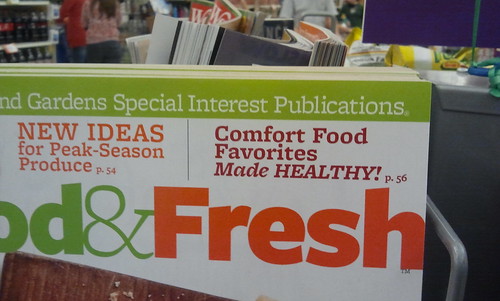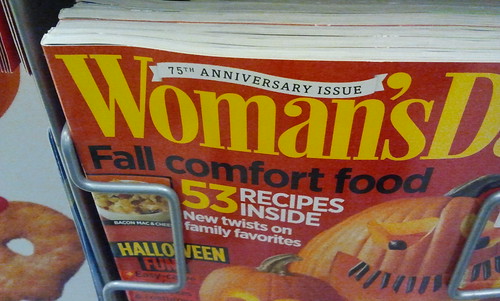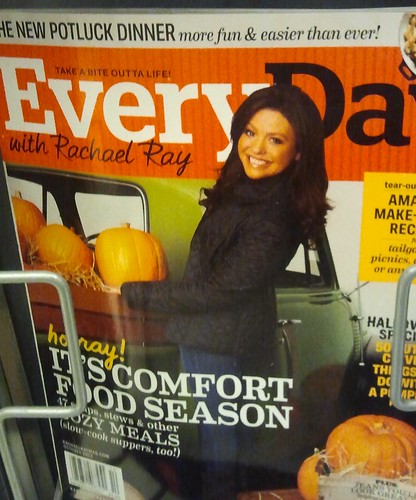To contact us Click
HERE
From Gnolls.org and the Paleo Rodeo.
"Different schools of nutrition argue endlessly about protein. Vegans swear it destroys our kidneys and we’re eating far too much. Strength athletes and leangains devotees can’t get enough. The government claims 56 grams/day is more than enough for anyone—yet even the most conservative and fat-friendly paleo templates recommend closer to 90 grams. Paleo eaters and omnivores enjoy pointing out that animal protein is “complete”, unlike most grain and vegetable proteins, while vegetarians and vegans swear by “protein combining”. And just about everyone gets confused when acronyms like BV, NPU, and PDCAAS enter the picture.~~~~~~~~~~~~~~~~~~~~~~~~~~~~~~~~~~~~~~~~~~~~~~~~~~~~~~~~~~~~~~~~~~~~~~ Wench's note: 56 grams/day, according to CW, was supposed to be the number we could consume before signs of kidney disease start appearing--but this was only measured for MUSCLE meat, which triples its protein when cooked, and does not account for organ meats
With the exception of duck and goose parts, every other animal's organ meats are much lower in protein, both raw and cooked, than muscle
--lamb (both organs and muscle) being the absolute lowest, as per the USDA nutrition database.
This also determined the serving size--3 oz. of cooked muscle meat twice daily can come to (or close to) the 56 grams of protein, depending on the meat and how it was cooked.
If you consume enough water (through food or drink) to dilute your protein, kidney disease risks fall
--this is how we Paleos/Primals can get away with consuming higher amounts of protein without compromising our kidneys. Dehydration is the biggest enemy of kidneys. See here
for more info.
~~~~~~~~~~~~~~~~~~~~~~~~~~~~~~~~~~~~~~~~~~~~~~~~~~~~~~~~~~~~~~~~~~~~~~
What Is Protein, Anyway?
Talking about “protein” is like talking about “buildings”. Just as “building” can mean a single-family home, a chemical factory, a mud-and-straw hut, a skyscraper, or the Taj Mahal, “protein” can mean anything from tiny di- and tri-peptides containing perhaps a few dozen atoms, to the giant linked chains of keratin that make up our hair and fingernails.As such, it turns out that “protein” is a term so broad as to be nearly useless when applied to nutrition. When we’re asking the question “How much protein should we eat?” what we’re really asking is “Which amino acids do we require, what relative proportions to we require them in, and to what degree are the foods containing them digestible, bioavailable, and not otherwise poisonous or disruptive to our metabolism when ingested?”If that sentence wasn’t immediately comprehensible to you, fear not—the purpose of this article is to explain it!What is Protein Made Of?
Proteins are molecules made up of amino acids stuck together by peptide bonds.Amino acids are so named because they contain both an amine group (-NH2) and a carboxyl group (-COOH). In the renderings below, we can see the carboxyl groups (the two red balls with one white ball attached) and the amine groups (the blue ball with two white balls attached). The alpha carbon, to which they’re both attached, is colored black. Here are a few examples: Lysine
Lysine Tyrosine
Tyrosine Valine
Valine Cysteine
Cysteine
Click here to see the 2D and 3D structure of all 21 standard amino acids.A peptide bond occurs when the carboxyl from one amino acid bonds covalently to the amine of another—releasing a molecule of water in the process. Result: we can make just about any shape and size of protein we want by stringing together the right amino acids in a single-file chain, carboxyl to amine.Strictly speaking, all the biologically important amino acids are alpha-amino acids, in which the amine and the carboxyl are both attached to the first carbon atom. The term “amino acid” usually refers only to the alpha-amino acids.
What Can Proteins Do?
It turns out that proteins are extremely versatile molecules. They are the basic machinery of all cells: DNA is, quite literally, just instructions for building proteins out of amino acids. They catalyze chemical reactions (“enzymes”), they signal metabolic and immune events (e.g. insulin, leptin, growth hormone, antibodies), they transport oxygen (hemoglobin and myoglobin), and they’re structural components of everything from the cytoskeleton and mitochondria of every cell to our tendons, ligaments, hair, nails, and connective tissue. Even the parts of a cell which are made from other molecules, such as phospholipids and polysaccharides, are ‘built’ by their interaction with proteins!The average human cell is approximately 65% water, 20% protein, 12% lipid (fat), 1% RNA and DNA, and 2% “other” by mass. (Freitas 1998)
Why Do We Need To Eat Protein?
Of the 21 amino acids coded for by the DNA of multicellular organisms, adult humans can only synthesize 12 of them. The other nine must be consumed in the diet, so we call them essential amino acids.
| Essential | Nonessential |
|---|
| Histidine | Alanine |
| Isoleucine | Arginine* |
| Leucine | Aspartate |
| Lysine | Cysteine* |
| Methionine | Glutamate |
| Phenylalanine | Glutamine* |
| Threonine | Glycine* |
| Tryptophan | Proline* |
| Valine | Serine* |
| Tyrosine* |
| Asparagine* |
| Selenocysteine |
* = conditionally essential – see belowIt’s actually far more complicated than “essential” or “non-essential”. Some amino acids can be converted to each other, but not created from scratch. Some amino acids can be synthesized, but not rapidly enough to meet all our metabolic needs. And children can’t synthesize some of the amino acids that adults can.
Further reading:
J. Nutr. July 1, 2000 vol. 130 no. 7 1835S-1840S
Dispensable and Indispensable Amino Acids for Humans
Peter J. Reeds
Result: humans have a non-negotiable requirement for dietary amino acids in order to sustain the basic processes of life.Why Do We Need To Eat Protein Every Day?
Some nutrients, like vitamin B12, are stored within the body and released when needed—so though we must consume a certain amount on average, we don’t have to do so every day in order to keep ourselves healthy. Unfortunately, we have no way to store amino acids. We have a tremendous capacity to store fat in fat cells, and a very limited capacity to store glucose (as glycogen in our muscles and liver)—but we must either use amino acids to synthesize proteins, burn them for energy, convert them to glucose, or (very rarely, and if all else fails) excrete them.Therefore, humans have a daily requirement for each one of the amino acids necessary to life, in the quantities required by whatever proteins the trillions of cells in our bodies are making (minus our ability to synthesize some of them). |
| Vegans substitute leafy greens for dairy |
Why “Complete Protein” Is Important
Imagine a factory that assembles cars. Let’s say you have 400 wheels and tires in inventory, 200 headlights, 100 chassis, 100 engines…but only ten steering wheels. It doesn’t matter that you’ve got almost enough parts to build 100 cars: ten steering wheels means you can build ten cars. Whichever part you have the fewest of limits how many cars you can build.Our bodies have the same problem when building proteins. For instance, lysine is an essential amino acid—so if we haven’t consumed any lysine, we can’t build any proteins that contain lysine, no matter how many of the other amino acids are available. This leaves us with two options:- Don’t build that protein. This is not usually a viable option, as it results in signals not reaching the intended recipient, damaged cells and tissues not being repaired, pathogens not being attacked…in other words, the failure of basic metabolic processes.
- Disassemble existing tissues in order to get the amino acid(s) we need. This is known as catabolysis or ‘going catabolic’, and is what actually occurs. Muscles are the first tissues to be catabolized, as becoming slightly weaker is usually less harmful than impairing the function of other organs.
Our Summary (so far)
- Proteins form the basic machinery of all cells.
- Proteins are made out of amino acids.
- Amino acids are not interchangeable: to synthesize a protein, each one of its constituent amino acids must be available.
- Many amino acids are essential—we cannot synthesize them, and therefore must ingest them as part of our diet. Many others are conditionally essential, and cannot be synthesized or converted at the rate we require them.
- Since we have no way to store amino acids for later use, our bodies have a daily requirement for them.
- Therefore, we must ingest each amino acid, roughly in the proportion we require it, every day.
Conclusion
Our biological needs are for specific amino acids in specific proportions, but “protein” can mean any combination of one or more amino acids. Therefore, the amount of “protein” in food is, by itself, a nearly meaningless number."When people combine grains, beans, nuts, and dairy/greens, they get a heck of a lot of starch and sugar along with their protein, and the quantity of food they must consume to get the proper amount of protein from these foods is large to say the least! From an economic standpoint, both meat-eater and vegan spend about the same amount of money to fulfill their protein needs, but the meat is a more efficient way of getting it--less actual tissue consumed for adequate protein, and less food consumed as a result. Definitely no starches, and not much sugar consumed along the way! They need to eat lots of food just to quell the sugar-and-starch-induced hunger emanating from lack of protein and fat.
Don't even get me started on vegetable fats here!
6 oz. cooked muscle meat daily (CW standards), about 2 lbs. of organ meat daily, or a pickup truck bed full of grains, beans/legumes, dairy or leafy greens, and nuts daily--which would YOU choose to eat?
BONUS: Here's some recent medical research involving kidneys and low-carb/high-fat diets.


 "The effects are being exacerbated by churlish weather in other parts of the world – notably in the big wheat-producing areas of Russia, Ukraine, and other countries that hug the Black Sea, where a more moderate drought has hit, as well as in Australia, the globe's No. 2 wheat exporter, where below-average rainfall is expected to reduce the November harvest by more than 10 percent.
"The effects are being exacerbated by churlish weather in other parts of the world – notably in the big wheat-producing areas of Russia, Ukraine, and other countries that hug the Black Sea, where a more moderate drought has hit, as well as in Australia, the globe's No. 2 wheat exporter, where below-average rainfall is expected to reduce the November harvest by more than 10 percent. "From Russia, to Panama, to the Philippines, almost everywhere really, governments did precisely the wrong thing. They panicked, rushing into grain markets to stockpile supplies or banning exports. Speculators poured in after them, like lions harassing a herd of antelope, raising prices even further beyond the rational laws of supply and demand."
"From Russia, to Panama, to the Philippines, almost everywhere really, governments did precisely the wrong thing. They panicked, rushing into grain markets to stockpile supplies or banning exports. Speculators poured in after them, like lions harassing a herd of antelope, raising prices even further beyond the rational laws of supply and demand."  "Long gone are the days when the world's population was subject solely to the whims of local crops and climate. The green revolution of the 20th century, which generated spectacular increases in grain yields, and the advent of cheap shipping created a global food market that's transformed the lives of hundreds of millions of people.
"Long gone are the days when the world's population was subject solely to the whims of local crops and climate. The green revolution of the 20th century, which generated spectacular increases in grain yields, and the advent of cheap shipping created a global food market that's transformed the lives of hundreds of millions of people. "If the drought were the only factor driving prices, Guatemala and similar governments might have been able to blunt the effects. In theory, they could have bought corn to stockpile when supplies were abundant and prices were cheap, and then released some of the reserves this year, in a time of need.
"If the drought were the only factor driving prices, Guatemala and similar governments might have been able to blunt the effects. In theory, they could have bought corn to stockpile when supplies were abundant and prices were cheap, and then released some of the reserves this year, in a time of need. "What we learned back in 2008, when we had the blowout in rice prices, was that we could prick that speculative bubble, that hoarding bubble across the system," says Peter Timmer, a professor emeritus of agricultural economics and development at Harvard University in Cambridge, Mass. "Suddenly, we discovered that the Japanese had 1.5 tons that they were just sitting on, and when it became clear that that could be put into the market, it just stopped [the speculation] dead ... it became clear that just having some kind of reserves to draw on in times of panic can stop the panic itself."
"What we learned back in 2008, when we had the blowout in rice prices, was that we could prick that speculative bubble, that hoarding bubble across the system," says Peter Timmer, a professor emeritus of agricultural economics and development at Harvard University in Cambridge, Mass. "Suddenly, we discovered that the Japanese had 1.5 tons that they were just sitting on, and when it became clear that that could be put into the market, it just stopped [the speculation] dead ... it became clear that just having some kind of reserves to draw on in times of panic can stop the panic itself." "One region analysts will be watching particularly closely for any signs of new upheaval is the Middle East. A recent study by the New England Complex Systems Institute, a Cambridge, Mass.-based think tank, concluded that food prices are a key indicator of political unrest in the region – as evidenced by the Arab Spring, which was triggered in part by widespread frustration over escalating food costs. The authors worry that continuing upward pressures on foodstuffs will unleash a new round of unrest."
"One region analysts will be watching particularly closely for any signs of new upheaval is the Middle East. A recent study by the New England Complex Systems Institute, a Cambridge, Mass.-based think tank, concluded that food prices are a key indicator of political unrest in the region – as evidenced by the Arab Spring, which was triggered in part by widespread frustration over escalating food costs. The authors worry that continuing upward pressures on foodstuffs will unleash a new round of unrest."












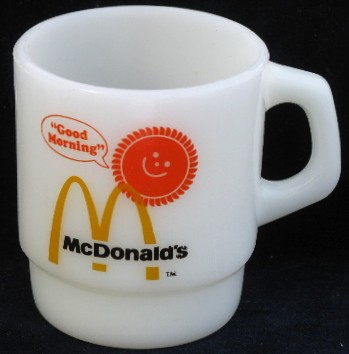 Do you remember McDonald's coffee in the 1970's? It was served in mugs made just for McDonald's by Fire King, as shown at left. That mug was the best thing about their coffee back then, which tasted like hot black battery acid,
Do you remember McDonald's coffee in the 1970's? It was served in mugs made just for McDonald's by Fire King, as shown at left. That mug was the best thing about their coffee back then, which tasted like hot black battery acid,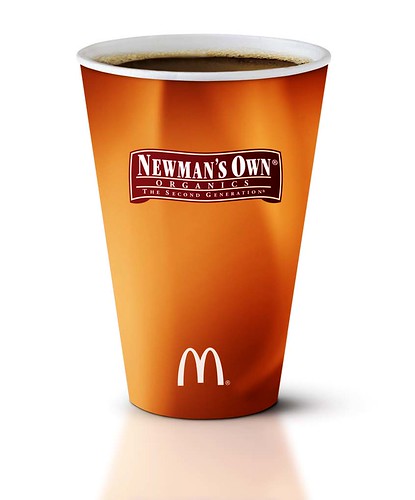 From September 23 to 29, 2012, participating McDonald's will be giving away free small-sized Newman's Own Organics coffee - because they know that their coffee is so good that once you try it you'll be back for more.
From September 23 to 29, 2012, participating McDonald's will be giving away free small-sized Newman's Own Organics coffee - because they know that their coffee is so good that once you try it you'll be back for more.
